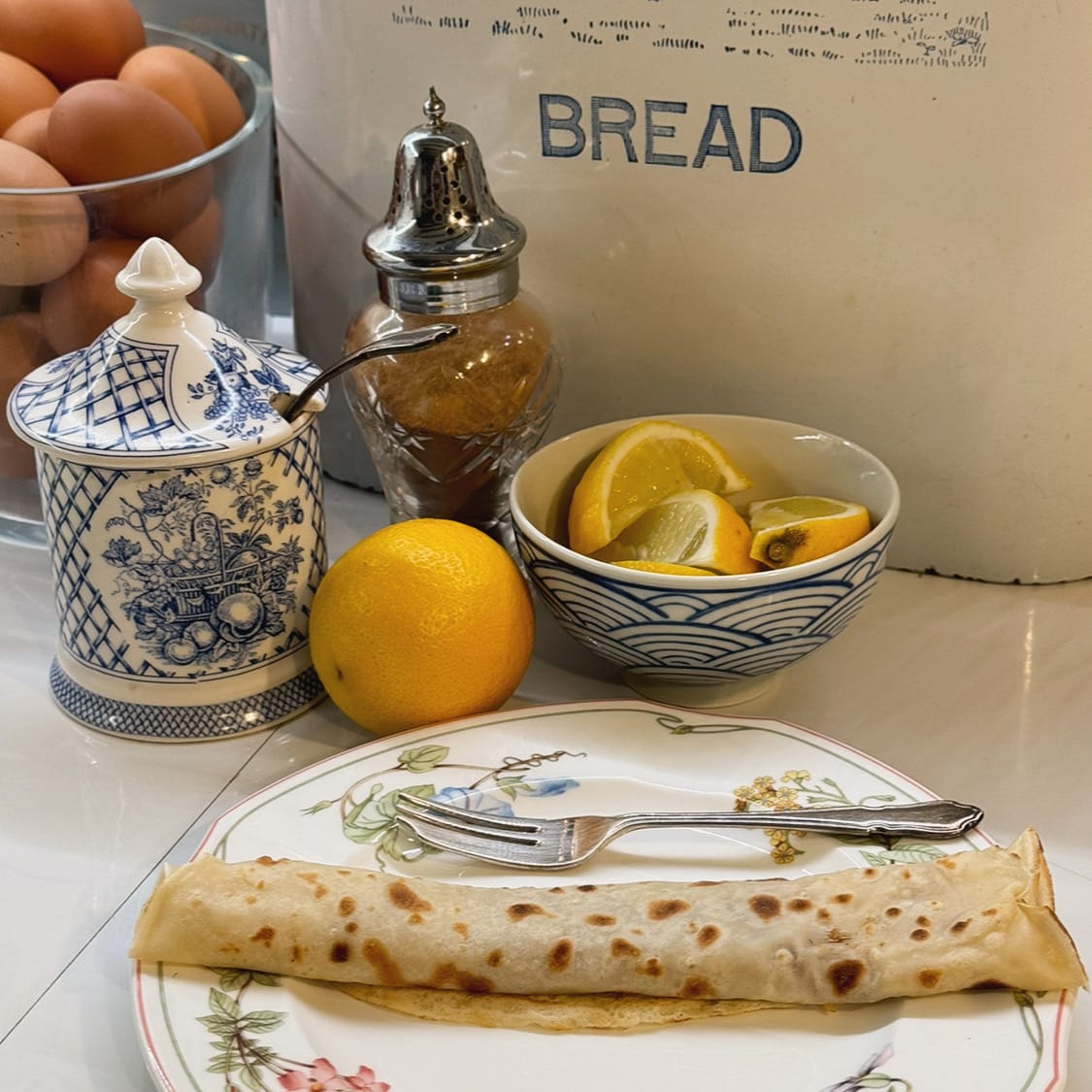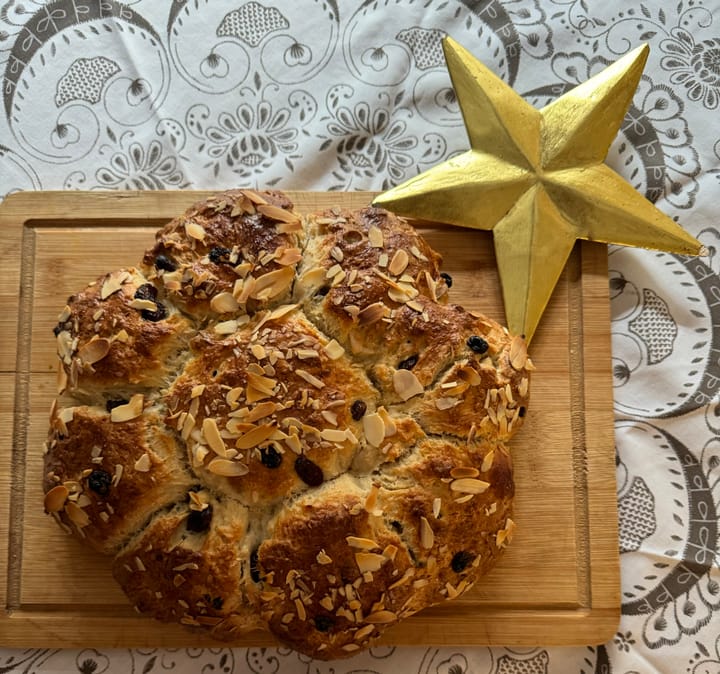Pancakes for Shrove Tuesday

This past week, we had Shrove Tuesday, or Pancake Day as many people know it. Pancakes are associated with Shrove Tuesday, the day preceding Lent, because they are a way to use up foods such as milk, eggs, flour and sugar, before the fasting season of the 40 days of Lent.
I love making pancakes for my family and would frequently make them on a Sunday morning when my girls were little, varying the type of pancake and filling. I also remember getting up at 4.30am to make 60 pancakes for my daughter’s pancake day at school. ( thinking back I must have been a bit nuts to do this!)
Although American style blueberry pancakes or Nutella filled crêpes have always been popular, the simple cinnamon sugar and lemon filled pancake remains my family’s favourite.
These days I tend to throw the ingredients into my large mixing bowl without measuring and make them intuitively, but here’s my original pancake recipe, in case you need a good one.
“Everyone knows that pancakes are the international breakfast food of love.”
- Kate Bromley
Ingredients:
- 2 cups plain white flour
- 2 cups water
- 1 cup full cream milk
- 1 Tbs melted coconut or vegetable oil
- pinch salt
For the Filling:
- cinnamon sugar
- fresh lemon, sliced to squeeze (or any filling of your choice!) This pancake recipe allows for you to add sweet or savoury fillings
Method:
- Break an egg into a large batter bowl and whisk it.
- Add the water and milk and whisk it all together.
- Sieve in the flour and then add the pinch of salt.
- Whisk everything together as well as you can.
- I then use a hand blender to remove all remaining lumps. (Alternatively, for deluxe pancakes, you can pour the batter mixture through a sieve to remove the lumps. This is time consuming and messy but does do the job well. Try and do this twice.)
- Add the melted coconut oil and mix through.
- Turn your stove on high and now prepare your crêpe/non-stick pan by melting about a tablespoon of coconut oil in the pan. Turn the pan around to coat it lightly with oil and pour the remaining oil into a cup to keep available on the side while you work.
- Turn the heat down to a moderate heat. Hold your pan with one hand while you take a soup ladle and scoop batter into the ladle so that it is about 3/4 full. Gently pour the mixture into the pan, rotating the pan so that the batter forms a lovely circle. (It should not be too thick, but ensure there are no gaping holes in your mixture.)
- Cook for just around a minute until the pancake starts to lift up slightly from the pan and harden. Then either flip it if you’re brave, or use a large spatula and gently turn the pancake over to cook briefly (about 30 seconds) on the opposite side.
- Slide your pancake off the pan and onto a plate and cover with two folded dishcloths to help keep them warm. (Tin foil creates moisture, so dishtowels are best)
- Continue by adding a little more oil and mixture and keep at it until all the pancakes are made.
- Once they are all done, add the filling of your choice. I like to add cinnamon sugar and drizzle the juice from a slice of freshly squeezed lemon over. Roll the pancake and serve immediately.
NOTE: In the unlikely event you have any pancakes or pancake mixture leftover, it can be frozen for another time.
Ps: The secret to a good pancake is to have a dedicated pancake pan. This helps prevent sticking and is a necessity in my opinion. Just any solid dedicated pan like this will do, however if you don’t mind splurging, it has to be said that Le Creuset have the king of all pancake pans.


